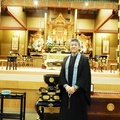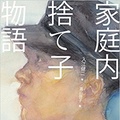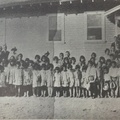I first heard the name Henry Fukuhara, a second-generation Japanese watercolor artist, in May 2014 when I met Mary Higuchi, a third-generation Japanese artist who was expressing her experiences in the internment camps through watercolors.
Higuchi has no memories of her time at the Poston internment camp in Arizona, as she was between the ages of three and six. However, through her annual participation in a watercolor painting workshop at the former Manzanar internment camp site, which Fukuhara began in 1998, she has become able to paint watercolors depicting the Japanese-American experience at the internment camp.
Henry Fukuhara passed away in January 2010 at the age of 96, so it is not possible to interview him personally. From what Higuchi said, I learned that someone who knew Fukuhara's creative work well was Albert Seton, who worked at UCLA.
I began contacting Seton by email in August 2014, and finally had the opportunity to interview him at his Santa Monica studio in October. Based on what Seton told me and the records of the Seattle Heritage Project, I tried to find out what kind of person Henry Fukuhara was.
Henry Kazuo Fukuhara was born on April 25, 1913, in Fruitland, Humboldt County, California, near Oregon, the eldest of ten children to Ichisuke and Ume Fukuhara.
The Fukuhara family moved from Northern California to Southern California and purchased farmland in Santa Monica. At first, they grew crops like most Japanese farms, but because crop prices fluctuate wildly, they switched to cultivating and selling ornamental plants, which have more stable prices. Fukuhara's talent for art was recognized by his teachers from his high school days. After graduating from Santa Monica High School, he entered Otis School of Art, encouraged by his teachers. However, Fukuhara's studies at the art school ended after two months.
The Fukuharas' farm was struggling and they needed Henry's labor to keep it going. While continuing the family business of growing and selling ornamental plants, Fukuhara's creative drive continued. A linoleum print was published in the Automobile Club's members' magazine, Westway, in 1936 and exhibited at the Los Angeles Museum of History, Science and Art (the precursor to the Los Angeles County Museum of Art) that same year.
In 1942, 120,000 Japanese Americans were forced into internment camps. The Fukuhara family was sent to Manzana, California. Even in the camp, Fukuhara's talent for painting was recognized, and he was given the job of sketching and recording life in the camp by the War Relocation Administration, which managed the camp. In the course of this sketching assignment, Fukuhara visited the Topaz, Lower, and Jerome camps.
Fukuhara's sketches of life in Manzanar were compiled into a book and sold at various camps in 1944.
Fukuhara left Manzanar in 1943 and went to work harvesting sugar cane in Idaho.
After leaving Manzana, Fukuhara began looking for a place where he could rebuild his family business. He eventually found a place on Long Island, New York, where he was able to rent a greenhouse in a place called Deer Park. Fukuhara called his family from the camp and started Fukuhara Wholesale Florist.
Fukuhara Wholesale Florist began to gain a reputation for selling chrysanthemums. When the owner of the greenhouse passed away, he was able to buy the land. The wholesale flower business expanded beyond just growing flowers in greenhouses on Long Island to buying flowers from Colombia and Holland and selling them in New York. Fukuhara was responsible for all the overseas purchases and negotiations with retailers. However, the success of this flower business left him little time for his art.
However, at the age of 59, Fukuhara underwent major surgery, and after recovering, he resumed his artistic endeavors and even began taking painting lessons. In 1978, at the age of 65, he retired from business and returned to Santa Monica with his parents, Ichisuke and Ume. The house that the Fukuharas had owned before the war had not been confiscated, so the elderly Ichisuke and Ume chose to spend the rest of their lives in warm Santa Monica.
By the time Fukuhara returned to Santa Monica, he had already established himself as a known watercolor artist and soon began teaching watercolor painting in adult classes at Santa Monica College and at the Venice Japanese Community Center.
It was in 1998 that Fukuhara started the watercolor painting workshops that would later be called "Manzana Paint Out." At the time, watercolor classes were held at the Venice Japanese Community Center on the third Saturday of every month. For each class, Fukuhara would take his students to nearby locations such as Santa Monica to sketch outdoors. As one of the locations, Fukuhara chose Owens Valley, where the former site of the Manzana Internment Camp stands, as one of the locations for the sketches. 25 people participated in the first class, but the participants were not informed of the destination at first.
Seton met Fukuhara in 1997 and served as his assistant from the first Manzana Paint Out in 1998, but at the time, Fukuhara did not tell Seton that he had been an inmate at Manzana.
The magnificent natural scenery of Owens Valley fascinates the watercolor artists who participate every year. Some Japanese-American participants, such as Mary Higuchi, paint their own experiences in the internment camps, but Fukuhara only comments on how to paint the pictures and does not share his own opinions on the experiences of the internment camps or wartime internment.
Fukuhara's eyesight was deteriorating, so he stopped going to Manzana in 2005 and he passed away on January 31, 2010 at the age of 96. However, Seton took over recruiting participants and teaching the Manzana Paint-Out, and the workshop became nationally known among watercolor painters.
The five-day, four-night workshop planned for May 2015 is expected to attract approximately 100 people from across the United States.
© 2015 Shigeharu Higashi






